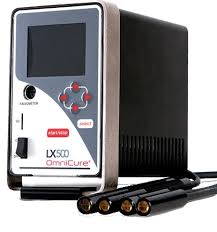More and more products are using automatic learning techniques, graphic or not, and Adobe is planning to manufacture its own chips to stay at the forefront.
There are few companies in the technology industry with the capacity to design their own processors . Among them are Google and Facebook, with TPUs – Tensor Process Unit – own optimized for the performance of the automatic learning algorithms . Tesla is appreciating it too.
Apart from them and saving the mobile manufacturers -Apple, Samsung, Huawei- that also have enough muscle, we use solutions from Intel, AMD, Qualcomm and IBM. Now it is Adobe who would be considering taking this leap.
Ready to Move Fast
This has been confirmed by his own CTO – technology chief – Abhay Parasnis at an internal innovation conference to which they have come from Axios . Again, it would be processors dedicated to machine learning – a branch of artificial intelligence.
The reason? Basically, the specific processors for these tasks are much more efficient and powerful than any other. Parasnis raised the question of whether they really “need” to license ARM technology, but said that it is something that is “worth paying attention to”.
In any case, Adobe does not maintain its own data centers, but relies on technology partners such as Amazon or Microsoft to do so, so this process does not seem at all immediate. Of course, they want to be ready to move quickly : “We have to reimagine our franchise products, if we do not do it, someone else will.”
Parasnis Believes in Arm, Not Only in the Mobile
Adobe has Sensei, its own machine learning platform and artificial intelligence, and of course they want to keep this tool competitive with the rest of the giants in the sector. To do this, they have implemented a hundred artificial intelligence algorithms that can be implemented in both graphic and documentary environments.
The ARM designs are at the heart of virtually all mobile phones, but have not yet made the leap to desktop computers. Parasnis would have been favorable to these chips, which considers that “we are entering a world of ARM in each device.”





![Steps to Fix the Microsoft Error Code [pii_email_f471d3ee8613f77bd6e2] Steps to Fix the Microsoft Error Code [pii_email_f471d3ee8613f77bd6e2]](https://www.todaytechmedia.com/wp-content/uploads/2020/10/Steps-to-Fix-the-Microsoft-Error-Code-pii_email_f471d3ee8613f77bd6e2-100x70.png)

![Steps to Fix the Microsoft Error Code [pii_email_9c55590039c2c629ec55] Inventory Management Software](https://www.todaytechmedia.com/wp-content/uploads/2020/03/Inventory-Management-Software-100x70.jpeg)



